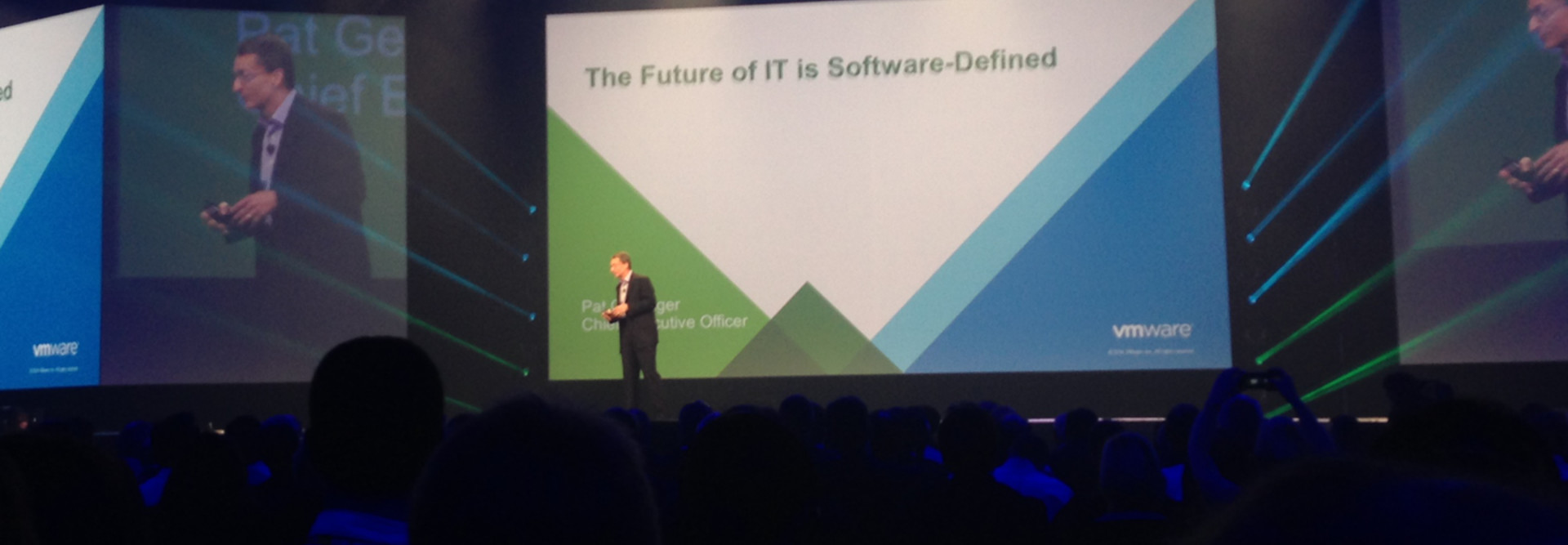EMC World 2014: Enterprises Must Use Software-Defined IT to Achieve Scale and Results
Virtualizing server technology was only the beginning. The race to transform the entire data center into a lean, mean, software-defined machine is on.
“Fundamental change is needed. A new approach is required,” said VMware CEO Pat Gelsinger during a keynote address at EMC World.
The need for a shift in the way IT resources are generated, stored and distributed is part of a much larger trend happening in technology in general. Throughout much of EMC World, experts from the company referred to this new phase of computing as “the third platform,” with the first platform being mainframe computing and the second being the client-server model that has been dominant for the past three decades of the PC era.
The leaders of the third platform aren’t the traditional players in enterprise IT, either. The leaders are the big consumer Internet companies, like Google and Facebook, said Pivotal CEO Paul Maritz.
Because these massive Internet-based companies are used to virtual infrastructures, generating massive data sets and analytics-based decision-making, they’re one Big Data-sized step ahead of most enterprises, which tend to move much more slowly.
“Enterprises, by and large, if they're good, they sometimes take weeks, months or years to go through this cycle,” Maritz said.
Switching to the Software-Defined Data Center
EMC is a company that practices what it preaches when it comes to investing its future in the virtual and software-defined data center.
Bill Reid, senior director of IT platform strategy and engineering at EMC, explained how the company has quickly embraced a software-defined approach to doling out IT resources to its engineers.
The company is already 94 percent virtualized, and it plans on making that 100 percent as soon as possible.
“We are virtual first, virtual always,” he said.
By shifting to a software-defined data center, the improvements in efficiency, reliability and transparency in the way IT resources are provisioned have been game changing for EMC. Reid says the difference between the SDDC and the traditional data center is like night and day.
For example, things that used to take four months to deploy now take less than a day. What used to take 600 man-hours now takes 0 man-hours, since it’s machine-automated.
Explaining the Software-Defined Future Through Storytelling
During a panel discussion at EMC World, Manuvir Das, vice president of engineering in EMC’s Advanced Software Division, walked the audience through several real-world scenarios to explain the value of software-defined storage and ViPR, EMC’s unstructured storage engine.
To explain the flexibility of a software-defined storage setup, he pointed to the ski lift. When it’s at capacity, it sticks three people in a seat no matter what, but when traffic is light, it allows passengers to ride solo.
To illustrate the challenge of unequal resource distribution and access, Das painted a scenario of a baseball stadium with multiple ticket booths where each booth is assigned a letter and a section of the stadium to sell tickets for. That division is useful for dividing up the workload, but he makes a salient point: “What happens if all the A’s show up?” Das said.
“When certain [storage] partitions get hot or busy, you’re not able to spread the load [in traditional storage],” he said.
The most valuable aspect of a software-defined architecture is that it allows enterprises to worry less about the hardware and focus more on meeting business objectives. That means companies can purchase commodity hardware and achieve limitless scale by accounting for the fact that the hardware will eventually fail and be swapped out. It also means companies can go for the less expensive equipment.
“Limitless scale means it has to be dirt-cheap. Otherwise, why would we do it?” Das said.
To learn more about how the evolved storage offerings from EMC could impact businesses, read this take on EMC World from Nolan Nowak, an EMC Technical Architect for CDW, on the Experts Who Get It blog.









